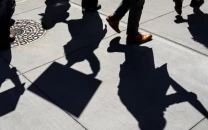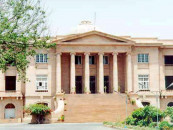A treasure trove of historical artifacts
Museum transports visitors back in time through the relics of Quaid-i-Azam

Amidst the halls of the Aiwane- Nawadrat (The House of Antiquities), a treasure trove of historical artifacts, one is transported back in time through the meticulously preserved relics of Quaid-i-Azam Muhammad Ali Jinnah.
Beyond the veneer of Picard and Cadillac vehicles, manuscripts of the Holy Quran, regal attire, and stately furnishings, even the unassuming pens and inkpots have withstood the erosive march of years, retaining their original allure.
These artifacts offer a window into the discerning taste and sophistication of the luminary who laid the foundations of Pakistan.
In 1985, a moment unfolded when Shireen Bai (Shireen Jinnah), the Quaid’s sister, bestowed upon the Aiwan-e-Nawadrat the rarified heirlooms that had been intimately intertwined with the life of the Father of the Nation.
This collection was later entrusted to the custodians of Mazar-e-Quaid, symbolising an enduring commitment to preserving heritage.
The Aiwan-e- Nawadrat, situated within the precincts of Mazar-e-Quaid, stands as a sentinel of history, housing a medley of artifacts that collectively bear witness to an era marked by both elegance and substance.
Gazing upon these venerable artifacts kindles a profound admiration for the refinement that defined Muhammad Ali Jinnah’s personal effects.
Enshrined within towering showcases crafted from aluminum and glass, these relics exist as tributes to an epoch long past.
Of particular note are the manuscripts of the Holy Quran, each a repository of spiritual wisdom, with one manuscript gifted by the Muslim Brotherhood of Egypt.
The Picard, a pristine relic from 1938, and the black Cadillac remain in pristine condition.
A carefully curated assemblage of personal garments, from coats to courtroom attire, captures the kaleidoscope of the Quaid’s wardrobe, replete with hues of pink, brown, and the unassumingly elegant white-collar ensembles.
The organisers recount an intriguing facet of the Quaid’s personality: his penchant for interchanging shirt collars as a pragmatic means to optimise time and resources, an exemplar of his pragmatic sensibilities.
A collection of approximately 24 pairs of shoes, ranging from the brown and white boots to the debonair black cut shoe, unveils a facet of his sartorial dexterity.
Notably, the traditional Multani Khussa signifies a blend of heritage and modernity.
A leatherbound case, a repository of a spoon, fork, and collapsible stainless steel knife, bore testament to his practicality even in the most mundane aspects of life.
Among the trove of rarities stands a verdant sofa, a gift from Raja Sahib Mehmoodabad.
Beside it, the pelt of a Bengal tiger, a precious offering from a Kolkata merchant, exudes a majestic aura that complements the ambiance.
Not to be overshadowed, an array of antique firearms, including double and single barrel guns, knives, daggers, and shields, is elegantly displayed behind glass and iron grills.
An ivory-handled walking stick, an object of understated sophistication, once cradled by the Quaid, stands encased in glass - a tangible memento of his regal bearing.
An ivory pen graces a table adorned with Burma teak office furniture, accompanied by a brass and wooden thermometer, a testament to his meticulous attention to detail.
Within the precincts of his living quarters, richly hued Shisham and Burma teak furnishings encircle the space, accompanied by an imposing iron trunk and a three-drawer rack, safeguarding his cherished possessions.
Among his dining accoutrements is a palm tree-inspired dinner set - a subtle yet profound reflection of his refined taste.
Hafiz Aslam, custodian of the Aiwan-e-Nawadrat, reveals the meticulous care invested in these relics, with quarterly cleaning and polishing rituals, augmented by periodic treatments for leather items.
The deep emotional connection shared by the staff with these artifacts fuels their unwavering dedication to preservation.
Foreign dignitaries and delegations eloquently voice their admiration, paying homage to an era characterised by grace and excellence.
A poignant photograph adorning the walls captures an intimate moment - Dina Bai, the Quaid’s daughter, paying homage to her father’s legacy during her visit in 2004.
Besides that, two monochromatic images offer a glimpse into historic milestones - a solemn Quaid-i-Azam arriving in a horse-drawn carriage to inaugurate the State Bank, and an image from July 1947, immortalising his unlocking of the State Bank.



















COMMENTS
Comments are moderated and generally will be posted if they are on-topic and not abusive.
For more information, please see our Comments FAQ